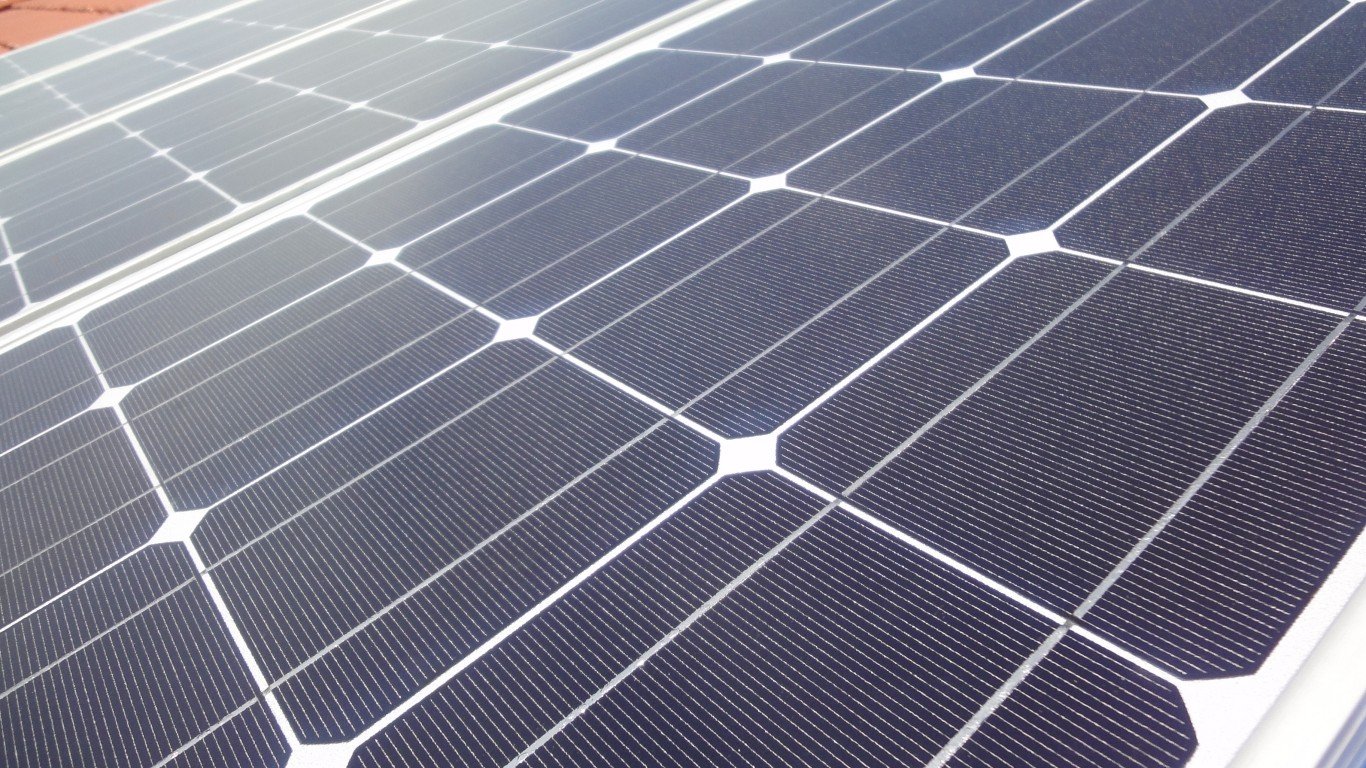

Since reaching a high more than 1,600% above its initial public offering price of $20 in mid-2008, shares of First Solar Inc. (NASDAQ: FSLR) have lost about two-thirds of their value. Virtually all the loss was recorded in the four-year period between 2008 and 2012. Many of us are old enough to remember the financial crisis that began in earnest in 2008.
From an all-time low below $12 a share in June of 2012, the shares had recovered to more than $80 in April of 2018. First Solar traded at about $58.20 Thursday afternoon.
The moral here is not how the mighty have fallen, but how dependent the renewable energy sector is on government incentives. In 2005, the U.S. Congress enacted the Energy Policy Act, giving a 30% tax credit to individuals that installed solar panels. The legislation was extended in 2015 and had survived until last year, when, in December, it was cut from the fiscal year 2020 spending bill. Over the next three years, the tax credit will disappear.
For the past dozen years or so, the fortunes of solar module and panel makers like First Solar have depended on tax credits and production tax credits to help lower the cost of building renewable energy demand. In the seven-week period from late September through early November last year, First Solar’s share price dropped from a high near $68 to a low of around $52. It was during this period that Congress rejected extending the 30% tax credit for renewable energy after Democrats, fearing a government shutdown, caved to White House demands to eliminate the subsidy. Making matters worse, the White House budget revealed earlier this month eliminates the production tax credit for renewable energy.
First Solar is reporting fourth-quarter and full-year results after markets close Thursday, and analysts are looking for earnings per share of $2.72 for the quarter and $2.13 for the full year. Revenues are forecast at $1.75 billion for the quarter and $3.43 billion for the full year. All these numbers are significantly higher than the respective fourth quarter and full year of 2018.
What has sent solar energy stocks higher even as subsidies are cut? Lower costs and cheap battery storage for utility-scale solar. Recent power-purchase agreements reflect an all-in levelized price (excluding subsidies) for solar generation in a range of $33 per megawatt-hour (MWh) to $38 per MWh. Over an expected 30-year life span and adjusted for inflation, the costs drop to a range of $20 to $30 per MWh. Four hours of battery storage adds about $4 per MWh to the cost.
The question for solar panel makers is whether they can make a profit at these prices. Since mid-October, five of nine analyst firms have initiated coverage with a Buy rating on First Solar stock, and one has raised its rating from the equivalent of Hold to Buy. One has downgraded the stock from Buy to Hold, another has downgraded the shares from Overweight to Underweight and lowered its price target from $66 to $49, while another has maintained a Hold rating but lowered its price target from $60 to $57. The consensus 12-month price target is $67.75, which implies upside of 18.6% to the trading price early Thursday afternoon.
First Solar’s outlook will play a big role in how investors react to the results due out after the markets close Thursday. Shares traded recently at $57.12, in a 52-week range of $49.06 to $69.24.
Thank you for reading! Have some feedback for us?
Contact the 24/7 Wall St. editorial team.
 24/7 Wall St.
24/7 Wall St.

